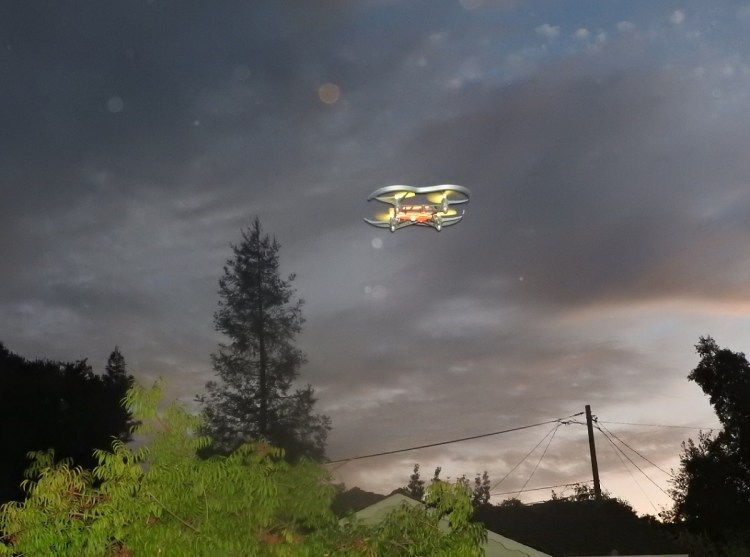The drones of the future will be able to take awesome videos that you can display at high frame rates on a 4K TV.
These flying cameras and sports cameras will be supported by the new H2 and H12 camera chips from Silicon Valley’s Ambarella. The chips are being announced at the 2016 International CES, the big tech trade show in Las Vegas this week.
Drones are getting more powerful and more functional, but they have to stay lightweight. With that trade-off in mind, Ambarella is trying to pack as much image-processing power into its chips as possible.
“We have a series of chips that cover all the different categories of drones,” said Jerome Gigot, director of marketing at Ambarella, in an interview with VentureBeat. “We’ll have a variety of demos at CES where you can control drones using goggles on your head.”
The Ambarella H2 chip can deliver 4K UltraHD video at 60 frames per second using less than 2 watts of power. The H2 is aimed at high-end cameras and drones that record 4K UltraHD video in H.265/HEVC formats at 60 frames per second or 4K AVC video at 120 frames per second. The cameras can record smooth video during fast-action scenes. Scenes can be played back in slow motion, too. The H2 can stabilize an image up to 4K. And it works even in low-light conditions.
“Drones are challenging because the lighting conditions are always changing as they fly,” Gigot said.
The H2 has 10-bit high-dynamic range processing to handle scenes with high contrast. It supports DSLR-quality still photography. The H2 also has a 1.2-gigahertz quad-core ARM Cortex-A53 central processing unit. That allows it to handle applications such as camera flight control, video analytics, and wireless networking. It can also support wide-angle panoramic cameras and USB 3.0 connectivity.
Meanwhile, the H12 is for use with mainstream cameras in smaller drones. It can deliver 4K UltraHD HEVC video at 30 frames per second, and it can stabilize an image up to 1080p resolution. The H12 has a 1-gigahertz single-core ARM Cortex-A9 CPU.
Ambarella’s rivals include applications processor companies in the chip market. But Ambarella already has its previous chips in high-end drones, such as the DJI Inspire 1. The company currently has about 630 employees.
Pricing and availability will be out later, but drone prices in the mainstream range vary from $300 to $800.
VentureBeat's mission is to be a digital town square for technical decision-makers to gain knowledge about transformative enterprise technology and transact. Learn More


